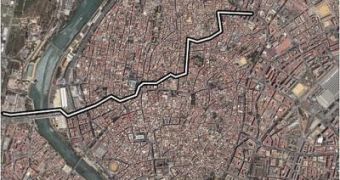Constructing a new subway line underneath a large city is already a huge challenge all by itself, but building one that bypasses a large number of historical buildings with the minimum amount of costs is even more complex. Nonetheless, this is what a team of experts from the Engineering and Architecture Schools of the University of Seville were in charge of. They had to create a new method of plotting the course of a new subway line under the city, while at the same time going around no less than 72 historical buildings along the way.
Naturally, the team resorted to mathematics to get the job done, also adopting design elements from the equations used to divide cities into coverage areas for mobile networks. “The methodology applied seeks to minimize the length of underground lines – with the subsequent economic saving – and to maximize their distance from historic buildings to avoid their being damaged,” University of Seville Higher Technical School of Architecture Professor Francisco A. Ortega tells SINC. He is also the co-author of a new study detailing the achievements, which appears in the latest issue of the Journal of the Operational Research Society.
The main mathematical schemes used for plotting the new course were Voronoi diagrams. Essentially, they are employed to divide a plane into polygons, each of the polygons being created around a point. In the new study, each of the buildings that needed to be avoided constituted a point. The scientists then created a mathematical algorithm that ensured the new line would pass through the closest points possible, but that the safest recommended distance was also kept between the future line and the monuments.
“There have been doubts as to the viability of this work regarding the safety of nearby buildings due to previous experiences, such as the fact that the construction of the first underground line in Seville in the seventies was suspended out of fear that the cathedral might be affected, or more recently in the district of Carmel, Barcelona, where the structure of certain buildings was damaged as a result of the works carried out to extend the underground,” Ortega says. He adds that the new work respects many safety criteria that were disregarded in the previous attempts, and that constructing the second subway line in Seville will be safe for the city's monuments.

 14 DAY TRIAL //
14 DAY TRIAL //